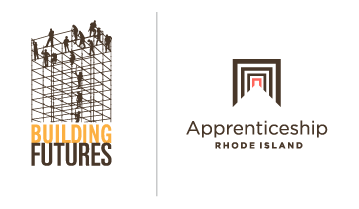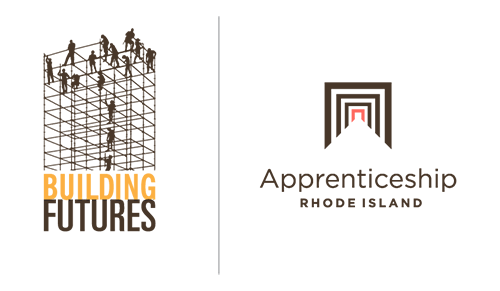
In 2021, Building Futures launched Building Green Futures, a bridge youth apprenticeship readiness program to prepare young adults (aged 18-24) for our Construction Pre-Apprenticeship and the physically and mentally challenging on-the-job learning involved in Registered Apprenticeship. As we designed the curriculum and identified service-learning projects and partners, we considered two overarching goals:
-
Supporting young adults in acquiring the physical and technical skills relevant to a construction industry career; and,
-
Community need in Rhode Island’s urban core cities.
Our goal was to ensure programming that was accessible and met participants’ needs while simulating the work environment and experience of our industry partner’s Registered Apprenticeship Programs.
The resulting program:
-
Cultivated a program culture and process that allowed young adults to gain the knowledge, skills , and ability to succeed in careers that start with Registered Apprenticeship; and,
-
Improved the natural and built environment in the state’s urban core cities with tree-planting and roadway landscape improvement projects.
Thank you to our programming partners including Groundwork RI, Providence Neighborhood Planting Program, and Woonasquatucket River Watershed Council for partnering on our pilot year!
The pilot program was made possible by grant funding from RI Department of Transportation with additional support from RI Department of Labor and Training and an anonymous donor-advised fund. We created a toolkit to summarize what we learned piloting this new program for young adults. You can download the toolkit here and get in touch for more information at [email protected].
Apprenticeship Readiness Program Overview
Participants in the Bridge to the Future Pilot program:
-
Explored careers available through Registered Apprenticeship via hands-on learning, including roadway and infrastructure construction
-
Learned roadway related environmental engineering principles including erosion management, soil remediation, and heat sink mitigation
-
Practiced tool identification and job site health and safety
-
Planted 120 Trees (different species, ages, and sizes) on roadways
-
Gained new skills during planting process, including masonry, de-paving, and tree guard installation
-
Understood (and practiced) better nutrition, including locally-sourced food and meal planning
-
Improved physical conditioning and stamina through customized group fitness workouts
-
Increased financial literacy skills, e.g, budgeting and avoidance of predatory practices






